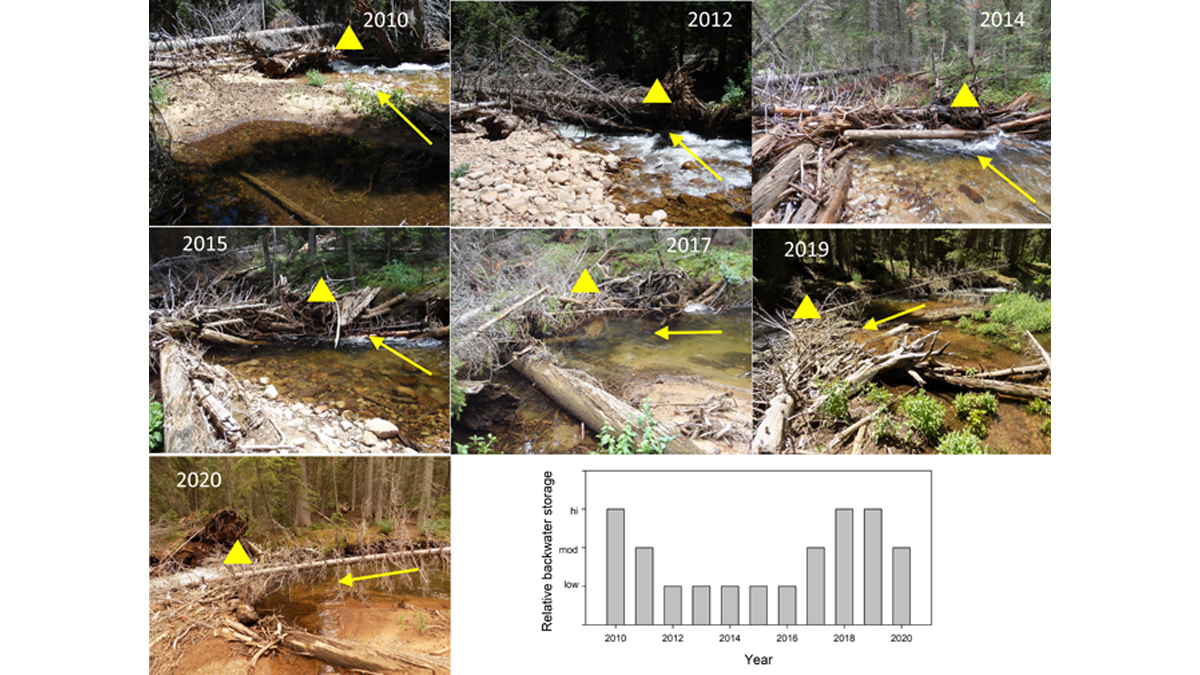Editors’ Highlights are summaries of recent papers by AGU’s journal editors.
Source: Water Resources Research
River restoration projects are increasingly including the reintroduction of large wood and logjams as a means to increase geomorphic and ecological diversity. Even though most projects incorporate logjams that are fixed in place, some try to achieve more natural conditions by allowing flows to mobilize the large wood introduced.
Using eleven years of observation records in mountain streams of the Southern Rockies, Colorado, USA, Wohl and Iskin [2022] followed the history of 429 naturally formed logjams along a 21-kilometer reach. They found that individual logjam persistence (the number of years that a logjam remains in place) was only 1 to 2.5 years but the site persistence (the number of years that a site had logjams) was 6 to 10 years. This was explained by the fact that logjams disappeared and reformed at sites that promoted logjam formation, which they called sticky sites.
Sticky sites were found to be more common in multi-thread reaches than in single threat reaches because of the smaller channels and lower velocities. In multi-thread reaches, logjam formation was facilitated by a positive feedback mechanism by which lower velocities and narrower channels generated logjams that, in turn, created backwater and overbank flow, promoting the formation of secondary channels. Those secondary channels persisted even after the original logjam disappeared and were able to capture more logs.
The study concluded that introducing mobile wood can result in persistent geomorphic and ecological improvements even if the resulting logjams are transient, and that restoration using introduced wood should focus on creating conditions for logjams to occur naturally (sticky sites).
Citation: Wohl, E., & Iskin, E. P. (2022). The transience of channel-spanning logjams in mountain streams. Water Resources Research, 58, e2021WR031556. https://doi.org/10.1029/2021WR031556
—Patricia Saco, Associate Editor, Water Resources Research

